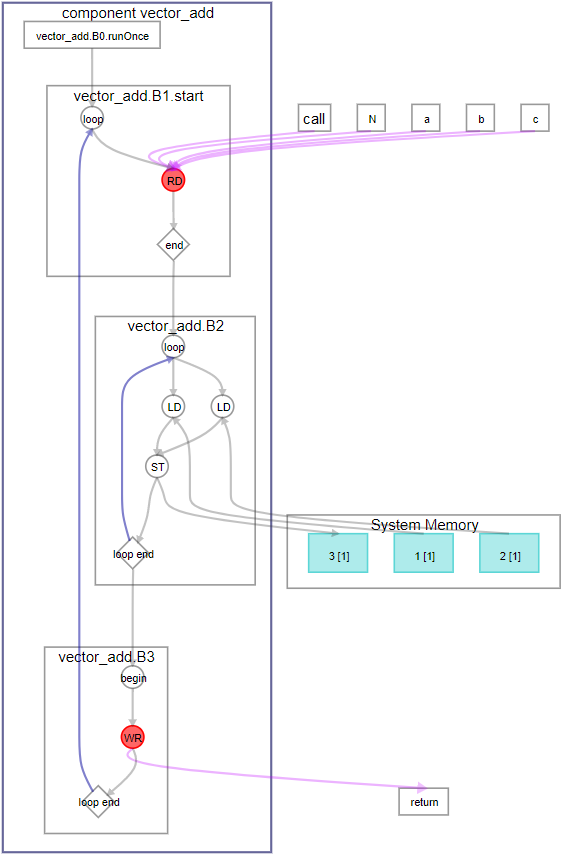Visible to Intel only — GUID: mzv1511996053473
Ixiasoft
Visible to Intel only — GUID: mzv1511996053473
Ixiasoft
4.1.2. Avalon® Memory Mapped Host Interfaces
By default, pointers in a component are implemented as Avalon® Memory Mapped ( Avalon® MM) host interfaces with default settings. You can mitigate poor performance from the default settings by configuring the Avalon® MM host interfaces.
You can configure the Avalon® MM host interface for the vector addition component example using the ihc::mm_host class as follows:
component void vector_add(
ihc::mm_host<int, ihc::aspace<1>, ihc::dwidth<8*8*sizeof(int)>,
ihc::align<8*sizeof(int)> >& a,
ihc::mm_host<int, ihc::aspace<2>, ihc::dwidth<8*8*sizeof(int)>,
ihc::align<8*sizeof(int)> >& b,
ihc::mm_host<int, ihc::aspace<3>, ihc::dwidth<8*8*sizeof(int)>,
ihc::align<8*sizeof(int)> >& c,
int N) {
#pragma unroll 8
for (int i = 0; i < N; ++i) {
c[i] = a[i] + b[i];
}
}- The vectors are each assigned to different address spaces with the ihc::aspace attribute, and each vector receives a separate Avalon® MM host interface.
With the vectors assigned to different physical interfaces, the vectors can be accessed concurrently without interfering with each other, so memory arbitration is not needed.
- The width of the interfaces for the vectors is adjusted with the ihc::dwidth attribute.
- The alignment of the interfaces for the vectors is adjusted with the ihc::align attribute.

The diagram shows that vector_add.B2 has two loads and one store. The default Avalon® MM Host settings used by the code example in Pointer Interfaces had 16 loads and 8 stores.
By expanding the width and alignment of the vector interfaces, the original pointer interface loads and stores were coalesced into one wide load each for vector a and vector b, and one wide store for vector c.
Also, the memories are stall-free because the loads and stores in this example access separate memories.
| QoR Metric | Pointer | Avalon MM Host |
|---|---|---|
| ALMs | 15593.5 | 643 |
| DSPs | 0 | 0 |
| RAMs | 30 | 0 |
| fMAX (MHz)2 | 298.6 | 472.37 |
| Latency (cycles) | 24071 | 142 |
| Initiation Interval (II) (cycles) | ~508 | 1 |
| 1The compilation flow used to calculate the QoR metrics used Intel® Quartus® Prime Pro Edition Version 17.1. |
| 2The fMAX measurement was calculated from a single seed. |